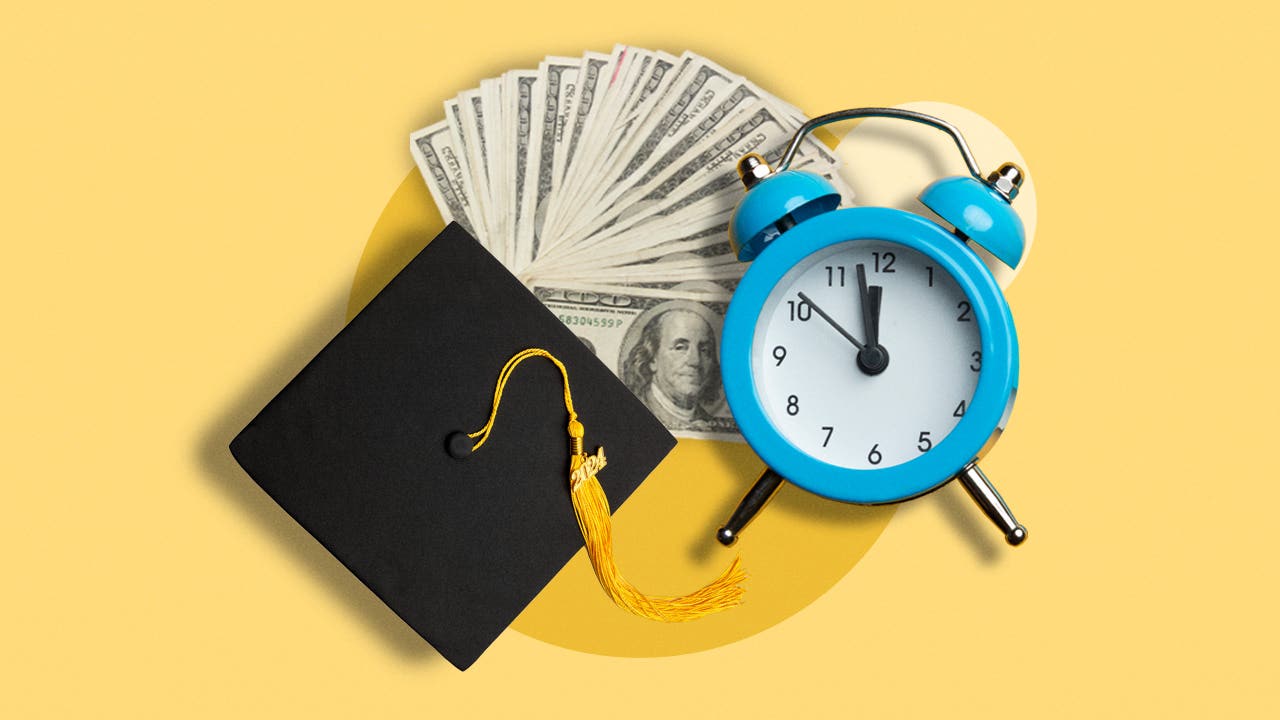Loan default rates and student loan repayment

Key takeaways
- A survey found that 45% of borrowers with student loan debt are struggling financially now that payments have resumed.
- Falling behind on federal student loan payments can have severe consequences, including damaged credit and wage garnishment.
- Borrowers can protect their finances by exploring options such as income-driven repayment plans, deferment, forbearance and loan consolidation.
A growing number of borrowers have been experiencing financial challenges since repayment for federal student loans resumed. These hardships range from being unable to afford basic needs to an inability to save enough for their children’s future.
Inflation and high interest rates have also contributed to borrowers’ stretched budgets. But it’s not all bad news in terms of student loan repayments and how they’re impacting people’s finances. On February 15, the Biden administration announced a new proposal to bring additional relief to borrowers experiencing financial hardship.
Payment resumption is impacting family’s financial security
A survey by ParentsTogether Action – a parent-led nonprofit organization – found that 45 percent of respondents with student loan debt are struggling financially. Since payments resumed last October, respondents have reported having difficulty meeting their family’s basic needs, including food, shelter and medical costs.
“What we have heard over and over again from families this past year is that they are really struggling financially,” Ailen Arreaza, executive director of ParentsTogether Action, says. “This was even before they had to start paying back their student loans. We were hearing that it’s very hard to support a family in the United States right now.”
For context, U.S. inflation hit a 40-year high in June of 2022. In an effort to temper inflation issues, the Fed increased interest rates 11 times over the course of a year and a half, making borrowing more expensive. Though things have cooled down since then, economists expect inflation to remain somewhat high until 2025.
“It’s almost like the perfect storm,” Arreaza says.”Everything is getting more expensive, families are losing the support from the COVID era and now there’s additional stressors like student loan repayments,” she adds.
According to ParentsTogether’s survey, a third of those with student debt haven’t been able to increase their savings since payments resumed. Thirty percent also reported not being able to save for their children’s future. Meanwhile, 22 percent have had to cut back on food, health care, rent and other essentials.
Debt and delinquencies could rise
About 40 percent of borrowers missed their first student loan payment in October 2023, according to the Department of Education. Though late or missed payments won’t impact borrowers’ credit until after September, thanks to the administration’s 12-month “on-ramp,” trouble could still be on the way.
“Falling behind on a student loan is uniquely punishing for families struggling to stay afloat,” Mike Pierce, executive director of the Student Borrower Protection Center (SBPC), says.
“When borrowers fall behind, often through no fault of their own, the consequences can be dire: damaged credit and garnished wages. For federal student loan debt, the government can even seize your social security payments and your tax refund,” he adds.
But falling behind on student loan payments is just the tip of the iceberg. The Consumer Financial Protection Bureau (CFPB) found that credit card and auto loan delinquencies were higher among those with large student loan balances, even while the payments were paused.
Additionally, a survey by the Fed found that payment resumption, along with tough macroeconomic conditions, may lead to further financial distress among borrowers. That’s because, among those in repayment, many expect to increase spending and borrowing to cope with rising costs while decreasing savings.
“That’s why it’s so important for the Biden administration to move ahead with plans to cancel debt for borrowers experiencing hardship — and to finish the job before the “on-ramp” ends this fall,” Pierce adds.
How borrowers can protect their finances
The Biden administration recently announced a new proposal, which will be discussed between February 22 and February 23, as part of a negotiated rulemaking process. This proposal aims to bring additional relief for borrowers experiencing financial hardship due to their student loan debt.
To determine whether a borrower is eligible for relief, the Department will take into account their total student loan balance and minimum payment due relative to their household income. Other factors, like how much a borrower spends on essential expenses like health care and child care, will also be considered for automatic discharge.
However, for those in need of immediate relief, the best option is to apply for income-driven repayment. Income-driven repayment plans reduce your monthly payment to a percentage of your income. Your household size and income play a big role in how much you’ll be required to pay each month. That said, in some instances, payments could be as low as $0.
If income-driven repayment isn’t a viable option, you can also ask your loan servicer to put your loans in deferment or forbearance. Either of these options brings relief by temporarily pausing your payments, however, interest may continue to accrue during this time.
Consolidating your loans is also another option. By consolidating, you’re combining multiple loans into a single account and can extend your repayment term to make more payments more manageable. Though this can lead to more interest paid over the life of the loan, it is still an option worth considering to make your payments more manageable.
The bottom line
As student loan repayment resumes, families are facing financial challenges and potential delinquencies. However, there is hope with the Biden administration’s new proposal for relief, as well as options like income-driven repayment, deferment, forbearance and loan consolidation. If you’re struggling with student loan repayment, the most important thing is to be proactive to protect your finances during these tough times.




